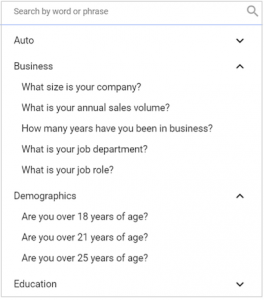The temptation to pick up a video camera and create killer content for your business or organisation is difficult to resist, after all, we capture content on our phones and smart devices all the time… and that looks okay, right?
There’s a huge difference between what is acceptable to watch on your smart phone and the content we hope will positively reflect our corporate image. It goes without saying; the latter should represent far higher production values than the fleeting moment captured on your phone. Although the process is much the same, when it comes to planning video content for your website, YouTube channel or professional social media channels, you should really be investing far more time ensuring the final quality is something you can be proud of. In the increasingly critical eyes of your target audience, there’s only one thing worse that no video content and that’s poor video content.
As Video Marketing becomes ever more important to a business, the need to demonstrate products, explain processes and evidence case studies, will be paramount. To maintain a strong online presence, businesses must juggle various digital marketing balls, but also know which ones to drop and leave for the experts. Most importantly, video content which reflects your brand (such as your homepage video), should really be produced by professionals, ensuring your hard earned reputation isn’t damaged by poor quality content. However, with an adequate level of training, most people can pick up the basic knowledge required to capture content suitable for video blogs, case studies, top tips and company updates.
Here are some of the biggest mistakes made by ‘rookie’ operators.
1. Ignore your audience
Who is the target audience? Where do they hang out on line? How old are they and what are their interests? Fail to consider your audience profile and your content is likely to miss the target. You aren’t producing videos for your own consumption; the format, style, content and delivery mechanism must be developed with your target audience in mind.

2. No planning
What’s the objective? Is it to train, explain, sell or tell? What is the aim of your content? Will it drive enquiries, attract followers, demonstrate expertise or promote trust? Whatever the purpose, make sure this is clear in your mind before you press record. List the points your content must communicate and tick these off as you go. Without a project or campaign plan, your video is unlikely to achieve any objective.

3. Trying to run before you walk
Before you embark on your first production, are you familiar with your production equipment? What problems may arise during filming? Do you have sufficient kit available; batteries, storage, correct microphones, lights…? Unless you are able to control the filming environment, there are many obstacles and hazards that can create problems ‘on location’. By anticipating a change in weather, lack of light, background noise or technical failure, you’ll be ready for any challenges that may arise.

4. KISS (keep it short stupid)
Unless your target audience is absolutely dying to watch your product review, case study or other, ensure you keep video duration less than three minutes, even shorter if possible. Where production values may not be as high, audience tolerance levels will be even lower. Get to the point, make your video snappy from the start and don’t labour the detail. If you can’t keep it under three minutes, then create additional chapters. Most audiences will switch off in less than ten seconds if they aren’t interested. Sad but true. Keep the KISS acronym in mind whenever you create video: (keep it short stupid).

5. Not sharing content effectively
So you’ve spent all this time, painstakingly planning and producing your content, now it’s going to languish on YouTube and receive no views? You many have created the best video in the world, but if no one sees it, what was the point? Ensure you share the video across all your social media channels. Pay special attention to those your target audience are likely to use (Linked IN, Facebook etc). Consider boosting or promoting the article, create blogs, e-flyers and invite others to share it too.
Most importantly, know your limits. Deployed professionally, video marketing can make a huge difference to your Digital Marketing efforts. However, fail to avoid these pitfalls and the effects can be negative. Always seek advice from a professional if you’re unsure how to execute your campaign or not confident with using production kit yourself.

(71)
Report Post






